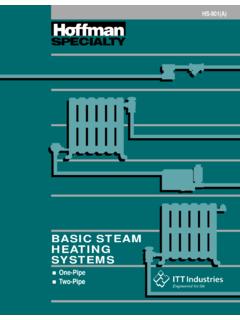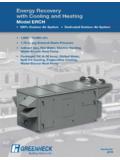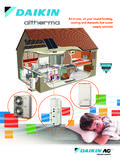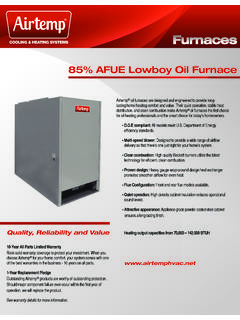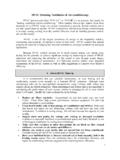Transcription of Types of Gas Heating Systems - Corning Appliance
1 Types of Heating Systems Gas Heating Systems can be fueled by either natural gas or propane with simple modifications accounting for the different characteristics of each. We refer to both fuels as simply "gas." The most common Types of Systems include forced air, hot water, steam, and localized space Heating . Forced Air Forced-air gas furnaces heat the majority of American single-family homes. Their efficiencies vary, but some new furnaces are among the most efficient Heating Systems available. Forced air Systems draw cool air from the home and supply warm filtered air to each room.
2 Most forced air Systems have both a supply and return register serving every room. However, many forced-air Systems have only one or two return registers. Problems can occur when interior doors are shut. Supply registers will pressurize some rooms, while areas equipped with return registers are depressurized. This pressure imbalance increases the likelihood of air leakage and heat loss throughout the building shell. Transfer grilles, jump ducts, or door undercuts may be used to mitigate these problems, especially when a central return is used. Many forced air duct Systems also have significant air leaks.
3 Duct leakage allows substantial heat loss in cases where ducts are located in unconditioned crawl spaces, attics, or attached garages. Hot Water Hot-water or hydronic Heating Systems circulate boiler-heated water through radiators, baseboard convectors, radiant floors, or fan-forced coils. Hot-water Systems are slightly more expensive than forced-air Systems but their radiant heat offers some comfort advantages. Many older hot-water Systems , which have performed reliably for decades, continue to provide comfort very efficiently. Hot-water Systems are most popular in cold-climate new construction.
4 Hot air Systems are preferable in mild climates since their duct Systems can be used to deliver air conditioning as well. Steam Steam Systems require higher temperatures, which make them inherently less efficient than forced air or hot water. The first central Heating Systems for buildings used steam distribution because steam moves itself through piping without the use of pumps. Non-insulated steam pipes often deliver unwanted heat in unfinished areas. Therefore, pipe insulation in these areas is usually very cost effective. Care should be used to install fiberglass pipe insulation that can withstand the high temperatures of these delivery pipes.
5 Hot-water Systems are most popular in cold-climate new construction. Hot air Systems are preferable in mild climates since their duct Systems can be used to deliver air conditioning as well. Localized Space Heating Supplemental or localized Heating Systems provide heat to a specific portion of the home. They have an efficiency advantage over central Systems because they have no pipe or duct system where heat can be lost. Space heaters permanently mounted in the wall, freestanding, or small portable heaters can boost the temperature of hard-to-heat rooms, new additions, or rooms used by individuals who are sensitive to cold, especially elderly persons.
6 A space heater may allow you to set the thermostat for the central system at a more economical level or to heat a small portion of the home in moderate weather without using the larger central system . Page 1 of 9 Modern, wall-mounted, gas space heaters incorporate several features that make them safer and more efficient than most older ones. Many are vented through the wall, and they may have combustion air ducted directly to the burner. Electric space heaters, such as baseboard units, are usually more expensive to operate than gas space heaters, though their lower initial cost and ease of operation make them attractive in some cases.
7 Maintenance, Service and Cleaning Regular maintenance, service, and cleaning will keep your heat system operating at peak efficiency. Some of these tasks you can do yourself. Other more technical or dangerous tasks are best left to qualified technicians. Homeowner Maintenance Forced-air Systems Change or clean filters every month, or whenever they look dirty, during the Heating season. Keep heat registers clean and unobstructed. Adjust the room registers to control the amount of heated air entering the room. Close them just enough to slow the airflow as needed: closing them completely saves little energy.
8 Hot-water Systems Keep radiators and baseboard units clean; dirt and dust will reduce heat output. Remove radiator covers, if used, to allow maximum airflow. If your home has traditional cast-iron radiators, add reflectors between the radiators and the wall to increase the amount of heat directed into the room. Arrange furniture and draperies so they do not block radiators or baseboard units. Bleed air from hot-water radiators once or twice each Heating season. Close the valve after all the air is discharged. Professional Service All Systems Check the condition of your vent connection pipe and chimney.
9 Parts of the venting system may have deteriorated over time and, without proper repair, may cause problems. Chimney problems can be expensive to repair, but may be justified unless you're installing new Heating equipment that won't use the existing chimney. Check the physical integrity of the heat exchanger. Leaky boiler heat exchangers leak water and are easy to spot. Furnace heat exchangers mix combustion gases with house air when they leak an important safety reason to have them inspected. Adjust the controls on the boiler or furnace to provide optimum water and air temperature setting for both efficiency and comfort.
10 If you're considering replacing or retrofitting your existing Heating system , have the technician perform a combustion-efficiency test. You may want to discuss your options for repair, retrofit, and replacement. Be sure to discuss the costs and the benefits of each option. Forced-air Systems Check the combustion chamber for cracks. Test for carbon monoxide (CO). Remedy cause of CO if found. Adjust blower control and supply-air temperature. Clean and oil the blower. Remove dirt, soot, or corrosion from the furnace or boiler. Check fuel input and flame characteristics, and adjust if necessary.

